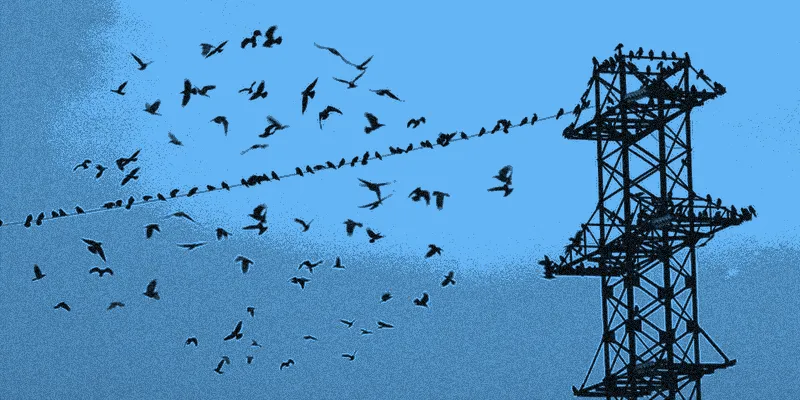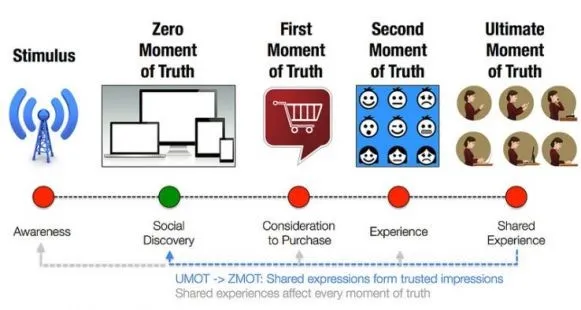Winning the crow's trust and breaking the barrier of a technology-spooked customer
Many customers, like crows, are still afraid of new technologies and computer-based aids, such as shopping website, a driverless car, cloud storage, etc. What works to gain the trust of the crow might be applicable to the technology-spooked customer.

During one my visits to my uncle’s house, I saw a number of crows on an electric wire at 6:30 am. There must have been at least 25 crows waiting for something. When they saw my uncle, all of them started creating a symphony with their cawing. He slowly went near the gate and dropped bird feed on the ground. There were flocks of pigeons, sparrows, and crows feeding on the food without any fear of my uncle. Mesmerised, I took a step forward. To my surprise, the pigeons and the sparrows continued on their feed but the crows just flew away with fear. I'm not an ornithologist or even a birdwatcher, but crows have always intrigued me. When I asked my uncle why the crows flew away, he told me:
"Crows don't trust humans! It took a good three months effort and a clear planned strategy to gain their trust"
You must be wondering what the connection between a crow and a technology-spooked customer is!
Many customers, like crows, are still afraid of new technologies and computer-based aids, such as shopping website, a driverless car, cloud storage, cryptocurrencies, blockchain, etc., which use AI and ML extensively to benefit the end customer.
This is because of three primary reasons:
- Security- This is mainly because of reports of fraud, identity theft, data loss and other security breaches regularly making the news. However, the fact is that online shopping is safer than ever before, and new and emerging security technologies, methods and standards are being implemented every day to safeguard the customer.
- Privacy concerns: This is mainly because of extensive usage of collecting user data, sometimes not required to enhance customer experience.
- Safety: New technologies are not time-tested so when integrated to products, safety is one thing which drives users away from the product/service.
- Fear of the unknown: What I don't know, I don't trust syndrome. No benefit of doubt to new technologies is mainly due to lack of knowledge or information about the new technology.
For the customer to move in their decision-making journey to buy your product or service, you need to identify and remedy the friction points in the purchase path. You need to engage and provide appropriate inputs at the make or break relationship building points. This moment of truth is the promise that a customer can relate to your brand; it is the assurance that you will “show up” or “come over” to address their needs or manage their issues/complaints and not risk disappointment with the outcome.
The picture below shows how the ultimate moment of truth (UMOT) gets influenced by zero moment of truth (ZMOT) in e-commerce shopping experience:

Let's look at the characteristics of a crow, a bird from the family of Songbirds, to which other birds such as Jays, Magpies, Parrots, and Ravens belong.
- Crows are so intelligent that they have unique capacities that only humans share among all animals on earth. They have similar advanced vocal learning abilities too. Crows have reasoning derived from causes, flexibility, thinking ahead and imagination. Crows are able to use these to plan ahead in great detail.
- Crows use advanced abstract concepts and extreme personal awareness. They use analogies which help them solve higher-order, relational matching tasks spontaneously.
- Crows remember people and cars for years and have metacognition and counting.
- Crows have object permanence; which is the ability to remember the existence of an object when it cannot be observed by sight, sound, touch, smell, or any other way.
- Crows have been found to understand mental time travel and have very complex inner mental life. The characteristics used are content, structure, and flexibility. They have complex memories of experiences including a description of what happened and the time and place.i. Experiments show that crows remember where and when they hide different types of food. They are aware that some of the food is still edible and some has been hidden for too long, and they go only for the edible food. This means they remember how long ago they buried it and how long the food is good. They are able to tell the difference between similar occurrences at other times and locations.
- ii. Crows are able to plan for breakfast the next day despite many different circumstances. They prepare food for tomorrow when they know they will not be given breakfast without any past training. These are spontaneous and instant mental events.
- Another advanced behaviour of crows involves gaze and gesture. Crows have extremely accurate vision and gesture through positions and gaze. They respond to human gaze and gestures if they aren’t threatening. These cues from human gaze to find food are much faster if the bird knows the human.
- Crows are quite sophisticated in protecting their hidden supplies but they do not hide from their close family and mates.
These characteristics and behaviour are very similar to an intelligent customer on the internet who is hesitant to adopt newer technologies. What works to gain the trust of the crow might be applicable to the technology-spooked customer. So, let’s look at these techniques:
- The best way to get on a crow’s good side is through the stomach! Find some food that the crow seems to like.
Food for the customer is useful data to make him/her feel comfortable about the technology.
Referrals, recommendations, technology know-hows including some potential threats and benefits should be fed to the new target customer. Providing tips on security to consumers who visit your site can help them understand how much of their online security is in their own hands. It can also create a sense of goodwill. Customers will be happy to learn these tips, and may be inclined to spend more time with you.
- Put out the peanuts consistently and don't look directly at the bird when you do so initially
When you are providing data to the customer, though you are collecting lot of personal information and his learning behaviour, ensure you don’t make it obvious to him as his biggest concern is solution compromising his privacy.
- Crows might take their own sweet time to come and take the food you have served. But be patient.
When you provide added services to the customer, he might not acknowledge in the beginning. Have patience and give him enough time to feel comfortable to adopt the new technology or solution.
- Crows watch other birds (such as sparrows, mynahs, etc.) feed on the food before they start to eat
The zero moment of trust (ZMOT) of the new customer gets largely influenced by ultimate moment of truth (UMOT) of other customers shared experience. Ensure you have demonstrated right references and recommendations.
- Stock the food and ensure you don't run out to feed the crows
Once you start the engagement with the customer, ensure you have enough data points to keep him engaged. Frequent push of information is key to sustain the customer.
- Establish a regular feeding schedule and over time crows will get more comfortable with you and start to expect food from you, and from there, you can build a bond of trust
When he starts adopting new technology and solution, start engagement very slowly, build the trust and then have a different customer experience solution to keep him engaged on the new platform/technology. Also give consumers more confidence to work with a provider that researches the security of websites and issues certifications of authenticity like VeriSign
- Once the trust is formed, you can look at the crows in their eyes and build a bond but don't try to get too close.
Once the bond is built with the customer, use data analytics and machine learning to give him more data to customise your service to his personal needs and usage behaviour. Make it more private for him. This will make him addictive. Always be dependable, steadfast, and observant. Ensure you use smarter predictive technology but be sensitive when it becomes pervasive. Avoid intrusion into your customer life in areas, which are not related to your product or service.
The most common concern among potential online shoppers is data loss, which the customer refers to the exposure of credit card numbers, names, addresses, and other data that online merchants routinely collect from shoppers. New technologies, such as end-to-end encryption, do help ensure the safety of consumer information as it travels over the network, and businesses are increasingly investing in such technologies. If customers do not know about these technologies, no investment in the world will encourage e-commerce-shy customers to shun their inhibitions. So, it is very important to let consumers know what kind of security measures are being taken to protect their personal data.
- Neighbour crows may get wind of what you are doing and challenge the family that normally occupies your yard
Once the customer gets addicted, there are his other trusted peer group who might influence him to get away from the newfound love of your solution/product. Ensure you engage with his peer group earlier in the cycle to build a better trust circle around your target customer.
- Too much food to the crows can get out of control and your house might become a communal site
Ensure you keep your service/product exclusive and controlled. Once it becomes a commodity, both early adopters and late adopters might be repelled with everyone using the service. Ensure value and brand doesn't get diluted.
So next time before you introduce a new product or a service in an area which is new to the customer, sharpen your customer engagement skills by studying the behaviour of a crow and first gain its trust!
(Disclaimer: The views and opinions expressed in this article are those of the author and do not necessarily reflect the views of YourStory.)







